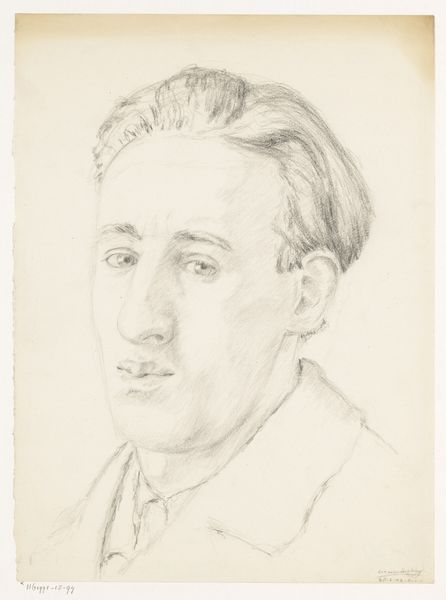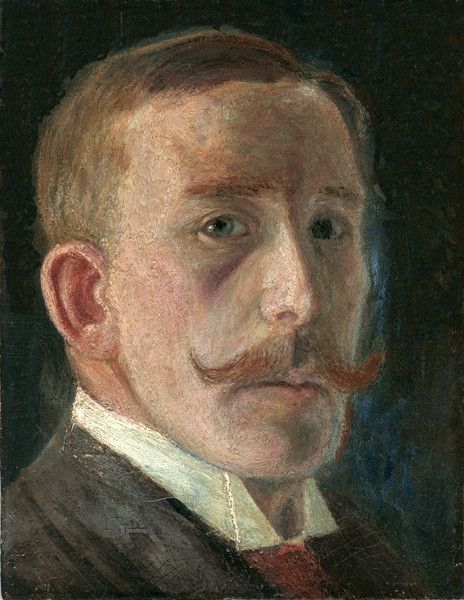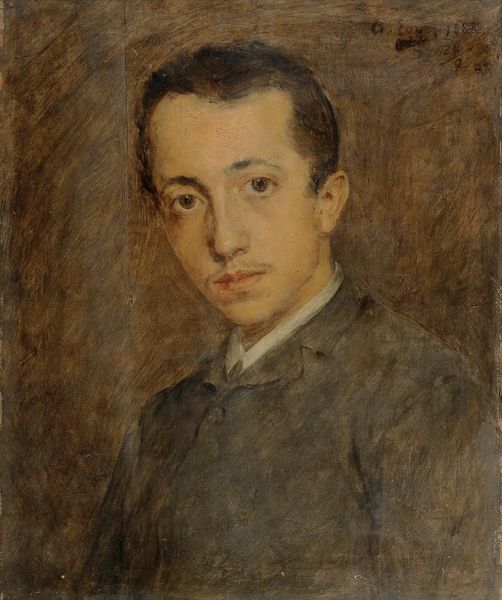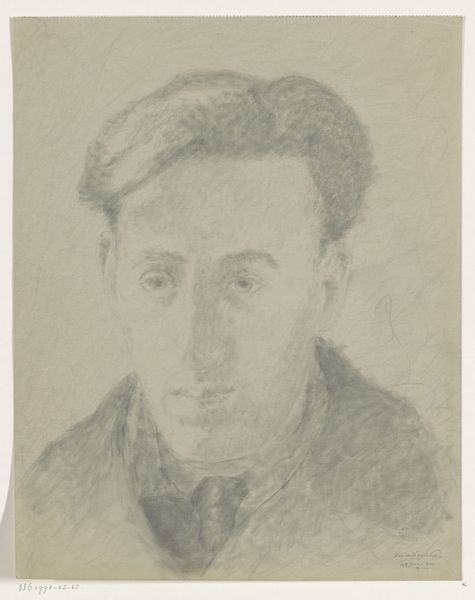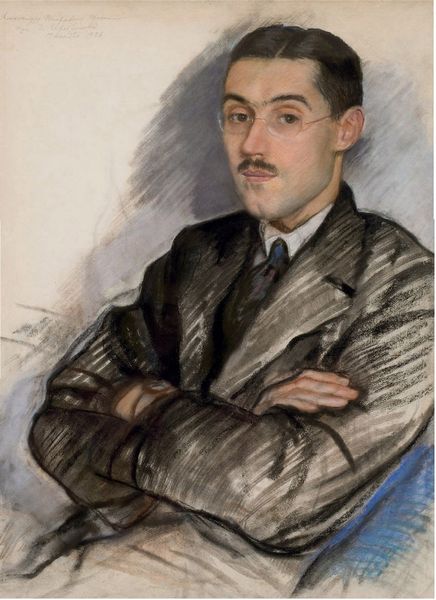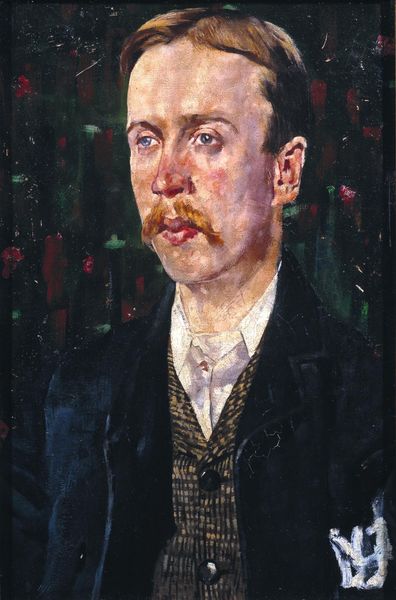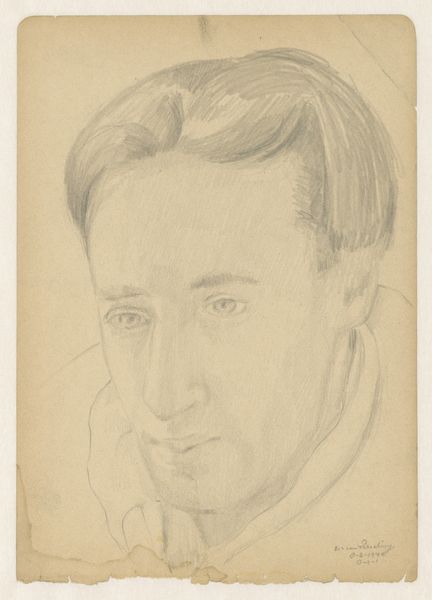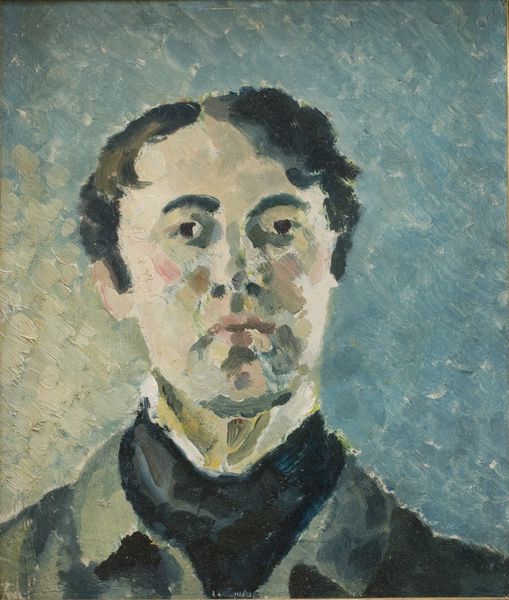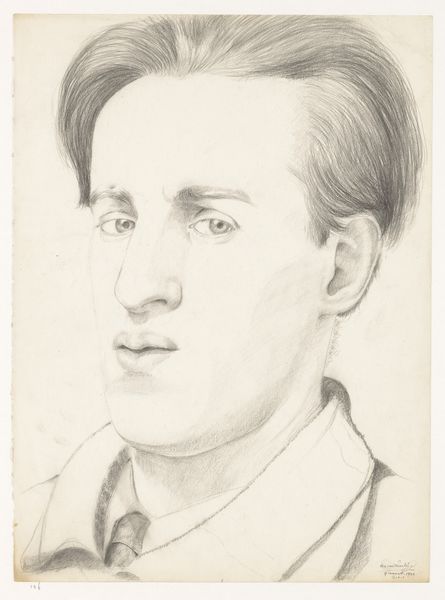
Dimensions: height 252 mm, width 177 mm
Copyright: Rijks Museum: Open Domain
Curator: Up next, we have a piece currently residing here at the Rijksmuseum, titled "Portret van een jongeman." It's a watercolor work by Jan Veth, dating sometime between 1874 and 1925. Editor: My first thought? Reserved, and slightly melancholy. There's a formal constraint meeting something much softer and introspective. I sense a longing for a future just out of reach. Curator: It’s fascinating to consider how much intimacy Veth captures here. It’s a watercolor portrait, a medium known for its fluidity. It feels more immediate, perhaps less precious than an oil portrait might have been in that period. You get the sense the artist wanted to preserve an accurate depiction. Editor: Absolutely, the intimacy comes through. I find myself focusing on the application. Watercolors allow for a real exploration of pigment; they speak of process. Notice how the suit almost dissolves at the bottom of the paper, suggesting less the rigid lines of production of clothes and more the man fading into the background of his historical moment. Curator: It's the Romanticism peeking through, wouldn’t you say? The idea of the individual, slightly detached from their environment, caught in a moment of contemplation. But then the Realism pins it down. That stern look suggests duty or some kind of responsibility. He is trapped by the suit, or at least the requirements that caused its manufacture. Editor: Very well articulated, that’s the social reality intruding again. Perhaps Veth wanted us to reflect on how individual emotion exists, shaped by both circumstance and production? I keep imagining him buying his paper, mixing his watercolors, the brushes used, and what they say about society and the sitter. Curator: Precisely, as if, within the watercolor itself, there are stories of craftsmanship, economics, all mingling beneath the surface like the pigments in water. You know, what initially feels like simple portraiture soon reveals itself to be a very subtle interplay between inner feeling and social awareness, wouldn't you agree? Editor: I would. This piece reminds us that even the most seemingly individual and Romantic expressions are inextricably tied to their material conditions of production and making. Curator: Leaving us perhaps with the question, who are we without the framework in which we are placed, as painted, as worn, and as displayed in public spaces? Editor: Indeed. It calls on all our historical context to speak with it now.
Comments
No comments
Be the first to comment and join the conversation on the ultimate creative platform.
